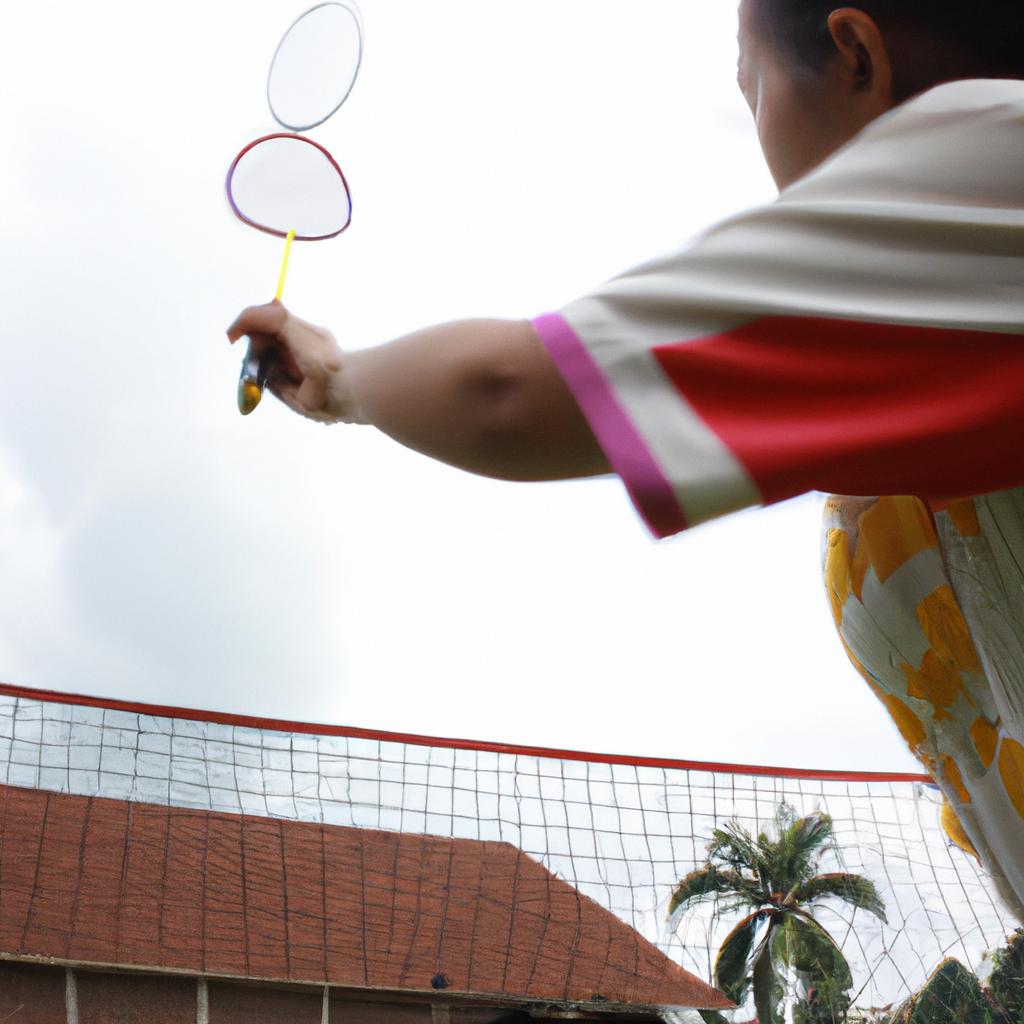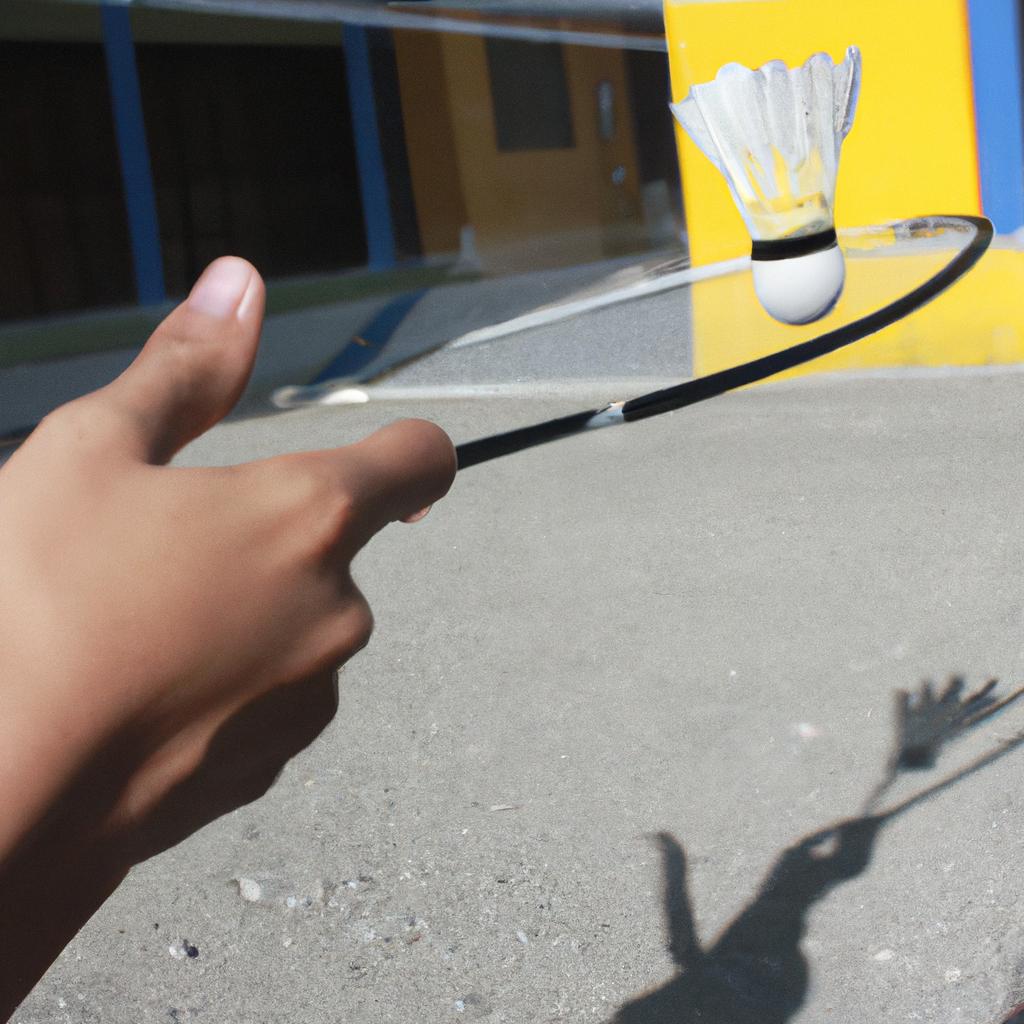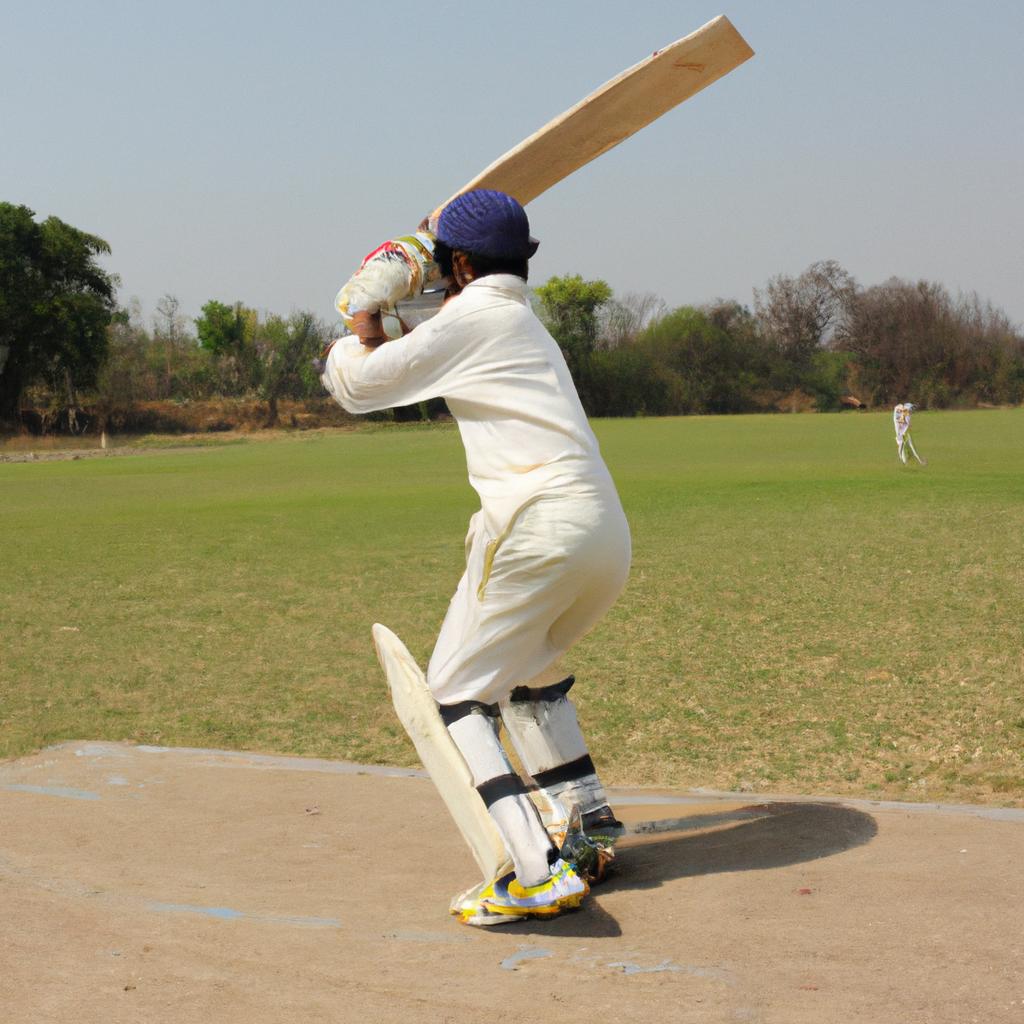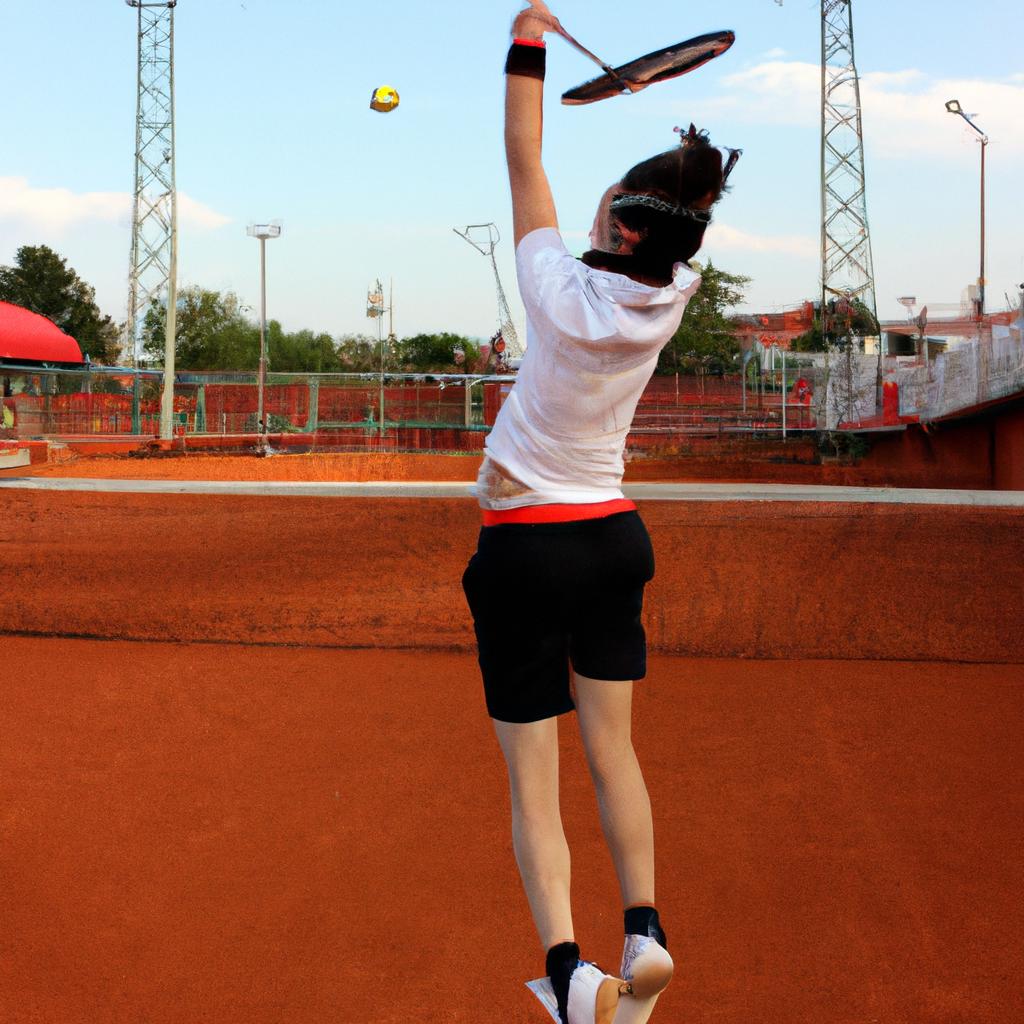In the world of sports, badminton stands out as a thrilling and fast-paced game that requires agility, strategy, and precision. With its origins dating back to ancient civilizations, this racket sport has evolved into a global phenomenon, captivating players and spectators alike. Tournaments play a vital role in showcasing the skills of top athletes while providing an avenue for competition at various levels. For instance, imagine a hypothetical scenario where a rising star from a small town competes against established champions in regional tournaments. This article aims to provide comprehensive insights into the world of badminton tournaments, exploring their significance, formats, rules, and the excitement they bring to both participants and fans.
Badminton tournaments hold immense value within the sporting community due to several reasons. Firstly, these events offer players an opportunity to test their abilities against formidable opponents on larger stages. By participating in such competitions, individuals can gauge their progress and measure themselves against some of the best talents worldwide. Secondly, tournaments serve as platforms for talent scouting by professional clubs or national team selectors who are constantly seeking promising athletes with exceptional potential. Consequently, success in these events can open doors to lucrative contracts or even representational roles at international championships. Lastly, for enthusiasts and supporters of the sport, attending or watching badminton tournaments is a thrilling experience. The atmosphere is electric as fans cheer on their favorite players, creating an intense and lively environment. The skill and athleticism displayed by the athletes are awe-inspiring, with lightning-fast rallies, powerful smashes, and strategic plays that keep spectators on the edge of their seats. Furthermore, witnessing upsets and underdog stories adds an element of unpredictability and excitement to the tournament.
Badminton tournaments come in various formats depending on the level of competition. At the professional level, there are major events like the Olympics, World Championships, and prestigious Open tournaments such as the All England Open or BWF World Tour Finals. These tournaments feature top-ranked players from around the world competing for titles and prize money.
In addition to these high-profile events, there are also regional and national tournaments that cater to different age groups and skill levels. These competitions provide a stepping stone for young talents to gain exposure and experience competing against their peers within their respective regions or countries.
The rules followed in badminton tournaments are standardized by the Badminton World Federation (BWF). Matches typically follow a best-of-three-games format, with each game played up to 21 points. To win a game, a player or pair must reach 21 points with at least a two-point advantage. If both sides reach 20 points, then the game continues until one side achieves a two-point lead.
Furthermore, there are specific regulations regarding equipment such as rackets and shuttlecocks to ensure fair play. Players must adhere to strict code of conduct guidelines to maintain sportsmanship during matches.
Overall, badminton tournaments offer not only opportunities for players to showcase their skills but also serve as platforms for growth, development, and entertainment within the sport. Whether you’re a player or a fan, these events bring together passion, competitiveness, and camaraderie in an exhilarating display of athleticism that celebrates the beauty of badminton.
Types of Badminton Tournaments
Imagine a young aspiring badminton player named Sarah, who dreams of participating in tournaments and showcasing her skills to the world. To help Sarah understand the different types of badminton tournaments available, let us explore three main categories: local club tournaments, national championships, and international competitions.
Local club tournaments are often the starting point for players like Sarah. These tournaments are organized by local badminton clubs or associations within a specific region or community. They provide an opportunity for players of all skill levels to compete against each other and gain valuable experience on the court. Local club tournaments offer various divisions based on age groups, such as junior or senior divisions, ensuring fair competition among participants.
Moving up the ladder, we have national championships, which attract top-level players from across the country. These prestigious events serve as qualifiers for higher-level competitions and allow players to showcase their skills at a national level. National championships consist of multiple rounds leading to a final showdown where only the best emerge victorious. The winners not only receive recognition but also earn significant ranking points that can boost their chances of qualifying for international competitions.
At the pinnacle of badminton lies international competitions like the Olympic Games and World Championships. These global events bring together elite athletes representing their respective countries. Participating in such tournaments requires exceptional talent and years of dedicated training. International competitions create a platform for players like Sarah to compete against some of the best in the world, gaining exposure and paving their path towards greatness.
- Experiencing nerve-wracking moments before stepping onto the court
- Feeling adrenaline rush through your veins during intense matches
- Witnessing spectators cheering you on with unwavering support
- Embracing both victory and defeat as opportunities for growth
Additionally, here is a table illustrating examples of notable badminton tournaments:
| Tournament | Level | Location |
|---|---|---|
| All England Open | Super 1000 | Birmingham, England |
| Sudirman Cup | World Team Event | Various |
| BWF World Tour Finals | Season-ending tournament | Varies annually |
| Asian Games | Continental Multi-Sport Event | Asia |
As Sarah delves deeper into her quest to become a professional player, understanding the rules and regulations of badminton tournaments becomes crucial. Therefore, let us now explore the next section: “Rules and Regulations of Badminton Tournaments.” The knowledge gained here will equip Sarah with vital information needed to navigate these competitive arenas successfully.
Rules and Regulations of Badminton Tournaments
Imagine a scenario where you are an aspiring badminton player looking to participate in tournaments. Understanding the different types of badminton tournaments is essential to make informed decisions about your participation and preparation. In this section, we will explore three main categories of badminton tournaments: local, national, and international.
Local tournaments serve as entry points for players aiming to gain experience and improve their skills. These events are usually organized by local sports clubs or associations within a specific region or city. They provide opportunities for players of all skill levels to compete against each other in a friendly environment. Local tournaments not only enhance one’s gameplay but also foster camaraderie among participants.
Moving on from local competitions, national tournaments bring together skilled players from various regions within a country. These events showcase higher levels of competition and often attract professional players seeking recognition at the national level. National tournaments offer greater exposure and can act as stepping stones towards competing internationally. The winners of these tournaments may earn invitations to represent their nation in prestigious global championships.
At the pinnacle of badminton competitions lie international tournaments, which feature elite players representing their respective countries on a global stage. Examples include the BWF World Championships and the Olympic Games. International tournaments garner significant attention from fans worldwide and generate immense excitement through fierce rivalries between nations’ top athletes vying for supremacy.
To further illustrate the significance of these tournament categories, consider the following emotional response evoked by bullet points:
- Local Tournaments:
- Opportunity to test one’s skills in a competitive setting
- Chance to meet fellow enthusiasts who share the same passion
- Platform for personal growth through facing diverse opponents
- Building confidence by achieving success at this level
Now let us delve into an emotionally engaging table highlighting key aspects related to each tournament category:
| Tournament Category | Level of Competition | Exposure/Recognition | Benefits |
|---|---|---|---|
| Local Tournaments | Moderate | Limited | Skill development, camaraderie |
| National Tournaments | High | Nationally recognized | Pathway to international tournaments |
| International Tournaments | Elite | Global exposure | Prestige of representing one’s country |
Understanding the various tournament categories allows players to set clear goals and plan their training accordingly.
Transitioning seamlessly into the subsequent section about “How to Participate in a Badminton Tournament,” it becomes apparent that aspiring participants need practical information on navigating the intricate world of badminton competitions.
How to Participate in a Badminton Tournament
Section H2: How to Participate in a Badminton Tournament
Having familiarized ourselves with the rules and regulations of badminton tournaments, let us now delve into the process of participating in these exciting events. To shed light on this topic, we will explore an example scenario where an aspiring badminton player named Alex wishes to enter their first tournament.
Participating in a badminton tournament requires careful planning and preparation. Firstly, Alex needs to research upcoming tournaments in their region by visiting local sports organizations’ websites or contacting badminton clubs. This step is crucial as it allows them to identify suitable competitions based on factors such as skill level, age group, and location. For instance, if Alex is a beginner, they may opt for smaller-scale local tournaments rather than high-level national championships.
Once Alex has identified potential tournaments, they need to register within the designated timeframe. Registration processes vary depending on the organizer but usually involve filling out an online form or submitting physical documents along with any required fees. It is important for participants like Alex to carefully read through all instructions provided by the organizers and ensure that they comply with registration deadlines and requirements.
After successfully registering for a tournament, players are typically assigned matches according to a draw format. The draw determines who plays against whom at each stage of the competition. Participants should regularly check tournament schedules posted by organizers to stay informed about match timings and venues. Additionally, players must be prepared physically and mentally for their matches – practicing diligently beforehand and adopting appropriate strategies tailored for their opponents.
- Opportunity to showcase skills and gain exposure
- Chance to compete against talented players from various backgrounds
- Platform for personal growth and development
- Building camaraderie among fellow competitors
Furthermore, we can examine a three-column table summarizing some key benefits associated with participating in badminton tournaments:
| Benefits | Description | Example |
|---|---|---|
| Skill Enhancement | Tournaments provide a competitive setting for improvement. | Alex improved their footwork and shot accuracy. |
| Networking Opportunities | Players can meet fellow enthusiasts and professionals. | Alex connected with experienced coaches. |
| Motivation through Healthy Competition | Competing against others drives players to give their best. | Alex’s determination increased after winning matches. |
In conclusion, participation in badminton tournaments requires diligent research, prompt registration, and thorough preparation. By seizing the opportunity to compete, players like Alex not only gain exposure but also enhance their skills and form connections within the badminton community.
Transition into the subsequent section about “Qualification and Selection Process for Tournaments”:
Moving forward, let us now explore the qualification and selection process that determines which players have the privilege of competing in prestigious badminton tournaments
Qualification and Selection Process for Tournaments
Section H2: Qualification and Selection Process for Tournaments
Having understood the steps required to participate in a badminton tournament, it is crucial to delve into the qualification and selection process that determines who gets the opportunity to compete. This next section will explore the various factors considered when selecting participants, ensuring a fair and competitive playing field.
Qualification for tournaments can vary depending on the level of competition and the governing body’s guidelines. For instance, let us consider a hypothetical case study involving a national badminton championship. To qualify for this prestigious event, players must meet specific criteria such as age restrictions, skill level assessments, and membership with recognized badminton associations or organizations.
The selection process involves multiple stages designed to identify the most deserving candidates. Here are key aspects taken into account during player evaluation:
- Performance Record: Players’ past performances play a significant role in determining their eligibility for tournaments. Consistent success in regional or local competitions often increases one’s chances of qualifying at higher levels.
- Ranking Points: Accumulating ranking points through participation in sanctioned events enables players to climb up the ladder towards securing entry into more prestigious tournaments.
- Trials/Elimination Rounds: In some cases, prospective participants may need to undergo trials or elimination rounds where they compete against each other to showcase their skills under pressure.
- Wild Card Entries: Occasionally, organizers reserve certain spots for exceptional players who may not have met all the standard qualifications but possess extraordinary talent or potential.
To gain further insight into how qualification works; refer below table showcasing an example of criteria used by a fictional badminton federation when evaluating player eligibility:
| Criteria | Weightage |
|---|---|
| Past Performances | 30% |
| Ranking Points | 25% |
| Trials/Eliminations | 35% |
| Exceptional Talent | 10% |
By incorporating these various factors and evaluation methods, the selection process ensures that only the most deserving players earn their place in competitive badminton tournaments. This meticulous approach fosters a sense of fairness, allowing talented individuals to showcase their skills on a larger stage.
Understanding the qualification and selection processes is just one aspect of participating in a badminton tournament. Equally important are the prizes and rewards awaiting successful competitors. Let us now explore the enticing incentives that motivate players to strive for excellence in their pursuit of victory.
Prizes and Rewards in Badminton Tournaments
When it comes to badminton tournaments, the allure of prizes and rewards serves as a significant motivating factor for players. Let’s explore the various incentives that await those who excel in these competitions.
One example of an enticing reward is the prestigious trophy awarded to the winner of major international tournaments like the BWF World Championships or the Olympic Games. This symbol of triumph not only embodies years of hard work and dedication but also acts as a tangible reminder of one’s exceptional skills on the court.
To further incentivize participation, organizers often offer attractive cash prizes to winners and runners-up. These monetary rewards can vary greatly depending on the tournament’s scale and prestige. For instance, while local club-level tournaments may provide relatively modest sums, elite events such as the All England Open Badminton Championships boast substantial prize pools worth hundreds of thousands of dollars.
Apart from trophies and cash prizes, sponsors frequently play a crucial role in enhancing participants’ motivation by offering lucrative endorsement deals. Successful players can secure sponsorship contracts with well-known sporting brands or other related companies, providing them with financial stability alongside increased recognition within the badminton community.
The significance of these rewards extends beyond mere material gains; they serve as powerful sources of inspiration for aspiring players worldwide. The prospect of holding up a championship trophy or securing sponsorships allows athletes to envision their own success stories, fueling their determination to achieve greatness on the badminton court.
Transitioning into our next section about “Important Tips for Success in Badminton Tournaments,” understanding how qualification processes are structured becomes essential knowledge. By comprehending what it takes to earn a spot in these competitive events, players can better prepare themselves mentally and physically for future challenges ahead.
Important Tips for Success in Badminton Tournaments
Previous H2: Prizes and Rewards in Badminton Tournaments
Having explored the exciting realm of prizes and rewards in badminton tournaments, let us now delve into some essential tips that can significantly contribute to your success in these highly competitive events.
Section H2: Important Tips for Success in Badminton Tournaments
To better understand how to excel in badminton tournaments, consider the following hypothetical scenario. Imagine a talented player named Alex who has been participating actively in local competitions but struggles to achieve consistent results at a higher level. By implementing the strategies outlined below, Alex can enhance their performance and increase their chances of triumphing:
-
Maintain Physical Fitness:
- Regularly engage in strength training exercises to build endurance and agility.
- Incorporate cardiovascular activities such as running or cycling for improved stamina.
- Practice flexibility through stretching routines to prevent injuries during intense matches.
- Adopt proper nutrition habits by consuming balanced meals and staying hydrated.
-
Enhance Technical Skills:
- Focus on perfecting fundamental techniques like grip control, footwork, and racket handling.
- Work with experienced coaches or trainers to identify weaknesses and strengthen them systematically.
- Analyze professional players’ gameplays through videos or live matches to gain insights into advanced strategies.
- Participate in practice sessions with skilled opponents to improve adaptability and decision-making abilities.
-
Develop Mental Resilience:
- Cultivate a positive mindset by setting realistic goals and maintaining confidence even during setbacks.
- Engage in mental preparation techniques such as visualization exercises or meditation before competing.
- Learn effective stress management strategies like deep breathing or progressive muscle relaxation.
- Seek support from sports psychologists or mentors who can provide guidance on overcoming psychological barriers.
In order to consolidate these tips further, refer to the table below that highlights key aspects crucial for success in badminton tournaments:
| Key Aspects | Description | Benefits |
|---|---|---|
| Discipline | Adhering to a structured training plan | Improves focus and consistency |
| Strategy | Analyzing opponents’ weaknesses | Enhances tactical decision-making |
| Time Management | Balancing practice and rest periods | Prevents burnout and optimizes performance |
| Communication | Effective communication with coaches or teammates | Facilitates coordination and teamwork |
By incorporating these tips into their badminton journey, players like Alex can maximize their potential, elevate their game, and increase the likelihood of achieving success in competitive tournaments.
(Note: Please note that the names used in this section are purely fictional.)









